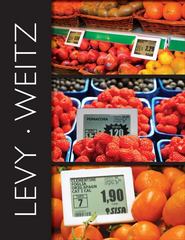
Beehive Truss and Roof Corp (Beehive) manufactures roof trusses for the residential construction industry at their single manufacturing facility in Canada. Materials used to build the trusses include lumber, nails and screws, and special brackets for connection points. One type of bracket used is called a "tower" bracket and is sourced exclusively from a U.S. supplier. As the demand for these brackets in Beehive's production operations has increased tremendously over the years, Beehive is planning to revisit their current ordering policy regarding these brackets, including an analysis of the supplier, order quantities, and transportation mode. The following focuses on the latter two facets (order quantities and transportation mode.) All monetary units are in Canadian dollars. The tower brackets are shipped to Beehive in boxes of 80 units, with each box costing Beehive $120 (excluding transportation costs). Boxes are palletized into a unit load, with 24 boxes on a pallet measuring 1.02 meters wide by 1.22 meters long (ignore the height of the pallet configuration; see figure one). The brackets can only be ordered in pallet quantities. Beehive has traditionally ordered in quantities of four pallets at a time, delivered by LIL (Less-than-truckload) carrier at a transportation cost of $190/pallet. Originally, four pallets would be enough brackets to last the production demand at Beehive for two months; however, expected demand for the foreseeable future is that four pallets of brackets is equal to approximately two weeks of demand (assume a 52-week production year). Given that the order frequency has had to increase with increased demand, and the fact that LTL carrier rates tend to be higher than full truckload carrier rates, Beehive is not sure whether their current policy of ordering in 4-pallet quantities for delivery by LIL carrier is cost efficient. Some further details and cost data follows; Beehive is also aware that other considerations may come into play and ask that these be discussed in your analysis as well. The purchase order process for purchasing the brackets has become quite routine and efficient, given the relatively high order frequency. Generally, an inventory analyst recognizes a need to place an order (via an alert from the ERP system), and initiates a Purchase Request. The Purchase Request is then converted into a Purchase Order by a Senior Buyer. This step has become very routine, given the order frequency and the reliability of the supplier. Finally, once an order is received, an invoice is approved and submitted to Accounts Payable for payment. Estimates are that the fixed cost to place an order is at the lower end of the $45 - $65 range that Beehive uses for repeat purchase orders with existing suppliers








